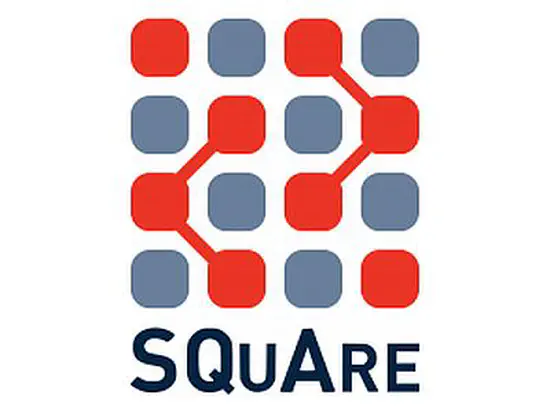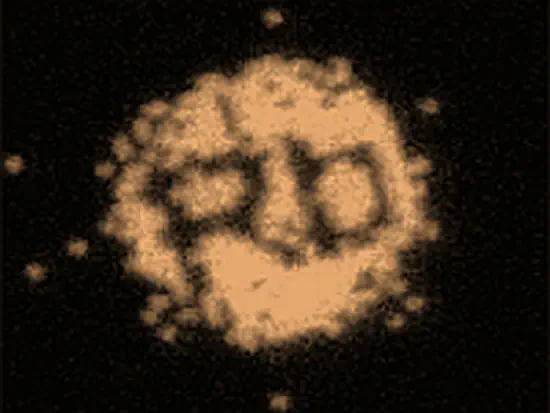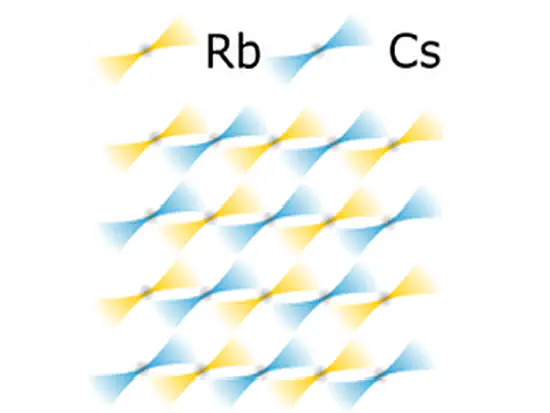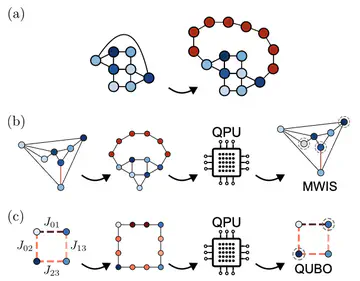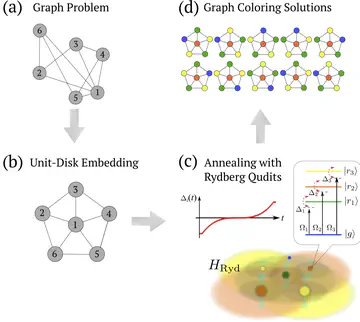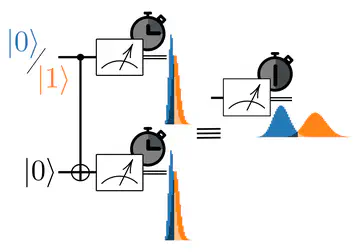Experimental Quantum Optics
and Photonics Group
Latest News
Neutral atom arrays provide a versatile platform to implement coherent quantum annealing as an approach to solving hard combinatorial optimization problems. In this work we present and experimentally demonstrate an efficient encoding scheme based on chains of Rydberg-blockaded atoms, which we call quantum wires, to natively embed maximum weighted independent set (MWIS) and quadratic unconstrained binary optimization (QUBO) problems on a neutral atom architecture. This approach successfully identifies the solutions to the original MWIS and QUBO graph instances. Our work expands the operational toolkit of near-term neutral atom arrays, enhancing their potential for scalable quantum optimization. For more details see arXiv:2503.17115.
We propose a new approach to natively embedding graph colouring problems onto neutral atom arrays using multiple Rydberg states each representing a unique colour. Graph colouring arises in a wide range of industrially relevant optimisation problems from sharing data across a wifi network to scheduling tasks and planning workloads. Using multiple Rydberg states enables efficient encoding of this problem onto quantum hardware and provides a new direction for near-term applications of neutral atom quantum computing. For more details see arXiv.2504.08598.
We present a scheme for speeding up quantum measurement. The scheme builds on previous protocols that entangle the system to be measured with ancillary systems. In the idealised situation of perfect entangling operations and no decoherence, it gives an exact space-time trade-off meaning the readout speed increases linearly with the number of ancilla. We verify this scheme is robust against experimental imperfections through numerical modelling of gate noise and readout errors, and under certain circumstances our scheme can even lead to better than linear improvement in the speed of measurement with the number of systems measured. This hardware-agnostic approach is broadly applicable to a range of quantum technology platforms and offers a route to accelerate midcircuit measurement as required for effective quantum error correction. For more details see Phys. Rev. Lett. 134, 080801 or arXiv:2407.17342.
Neutral atom arrays have emerged as a versatile platform towards scalable quantum computation and optimisation. In this paper we present first demonstrations of weighted graph optimization on a Rydberg atom array using annealing with local light-shifts. We verify the ability to prepare weighted graphs in 1D and 2D arrays, including embedding a five vertex non-unit disk graph using nine physical qubits. We find common annealing ramps leading to preparation of the target ground state robustly over a substantial range of different graph weightings. This work provides a route to exploring large-scale optimisation of non-planar weighted graphs relevant for solving relevant real-world problems. For more details see PRX Quantum 6, 010301 (2025) or arXiv:2404.02658.
Recent publications
A review and collection of metrics and benchmarks for quantum computers: definitions, methodologies and software
(2025)
Quantum computers have the potential to provide an advantage over classical computers in a number of areas. Numerous metrics to …
Speeding up quantum measurement using space-time trade-off
Physical Review Letters
134,
(2025)
We present a scheme for speeding up quantum measurement. The scheme builds on previous protocols that entangle the system to be …
A quantum wire approach to weighted combinatorial graph optimisation problems
Arxiv
(2025)
Demonstration of weighted graph optimization on a Rydberg atom array using local light-shifts
PRX Quantum
6,
(2025)
Neutral-atom arrays have emerged as a versatile platform toward scalable quantum computation and optimization. In this paper, we …
Graph Coloring via Quantum Optimization on a Rydberg-Qudit Atom Array
Arxiv
(2025)
